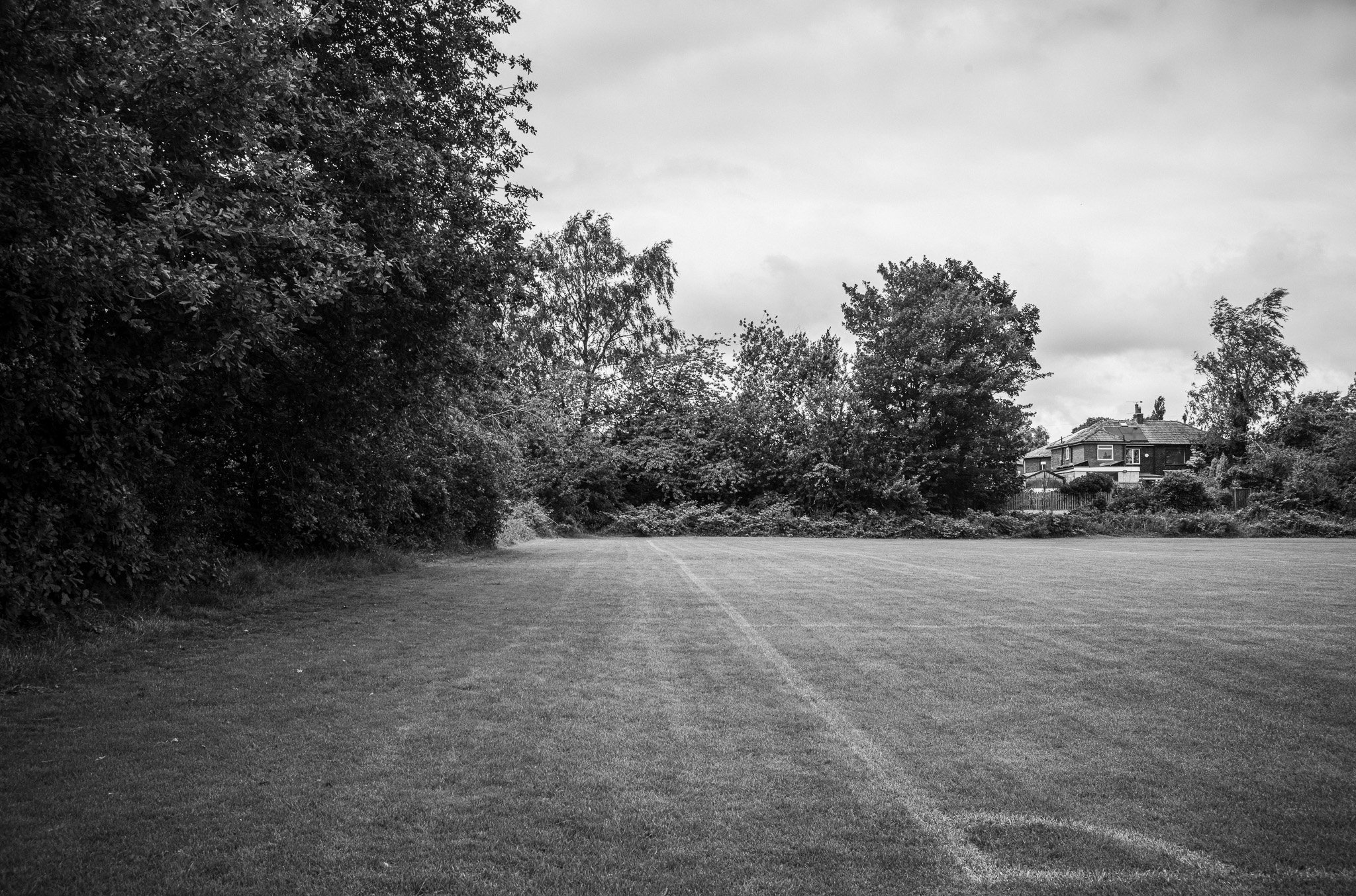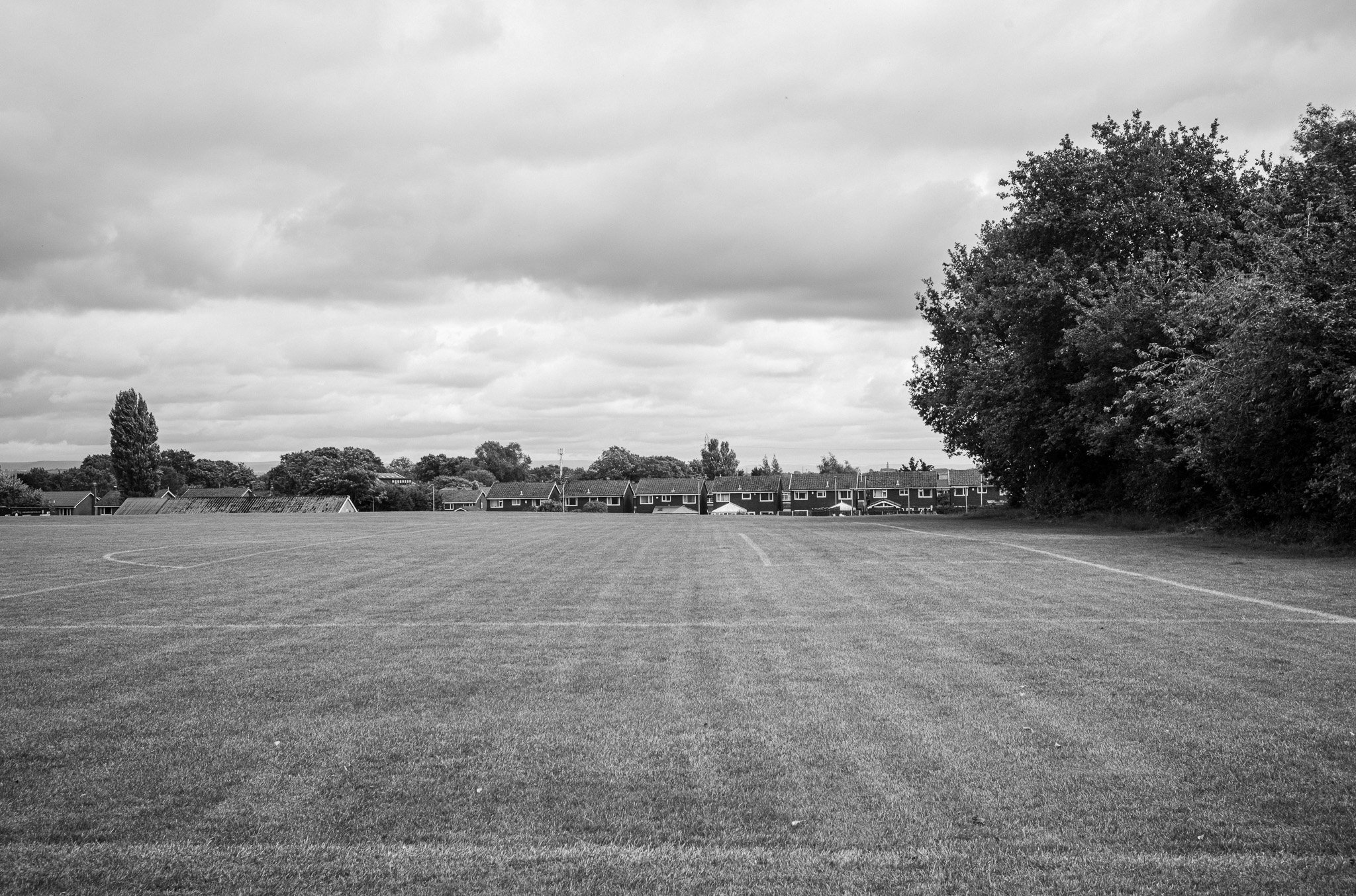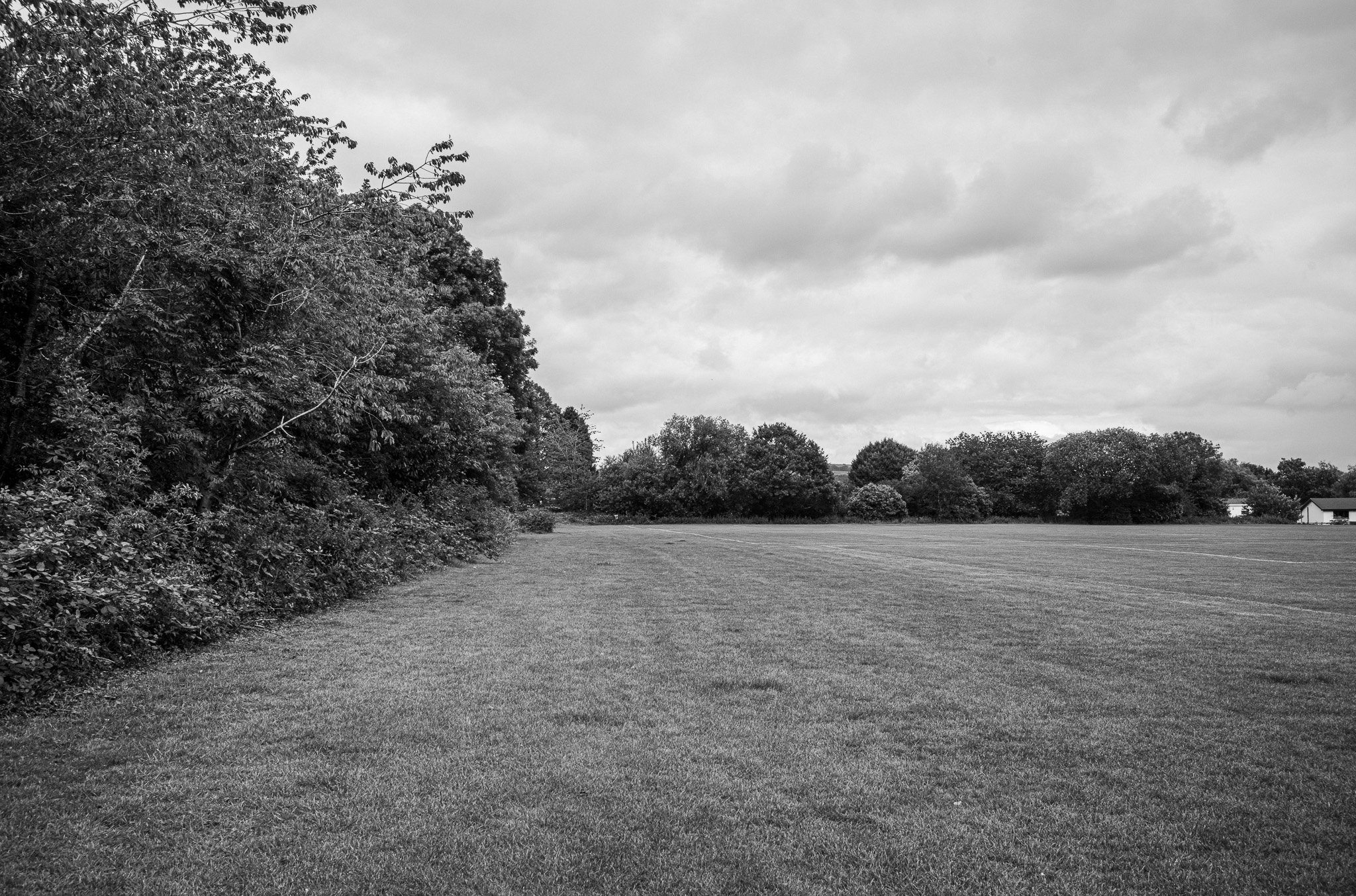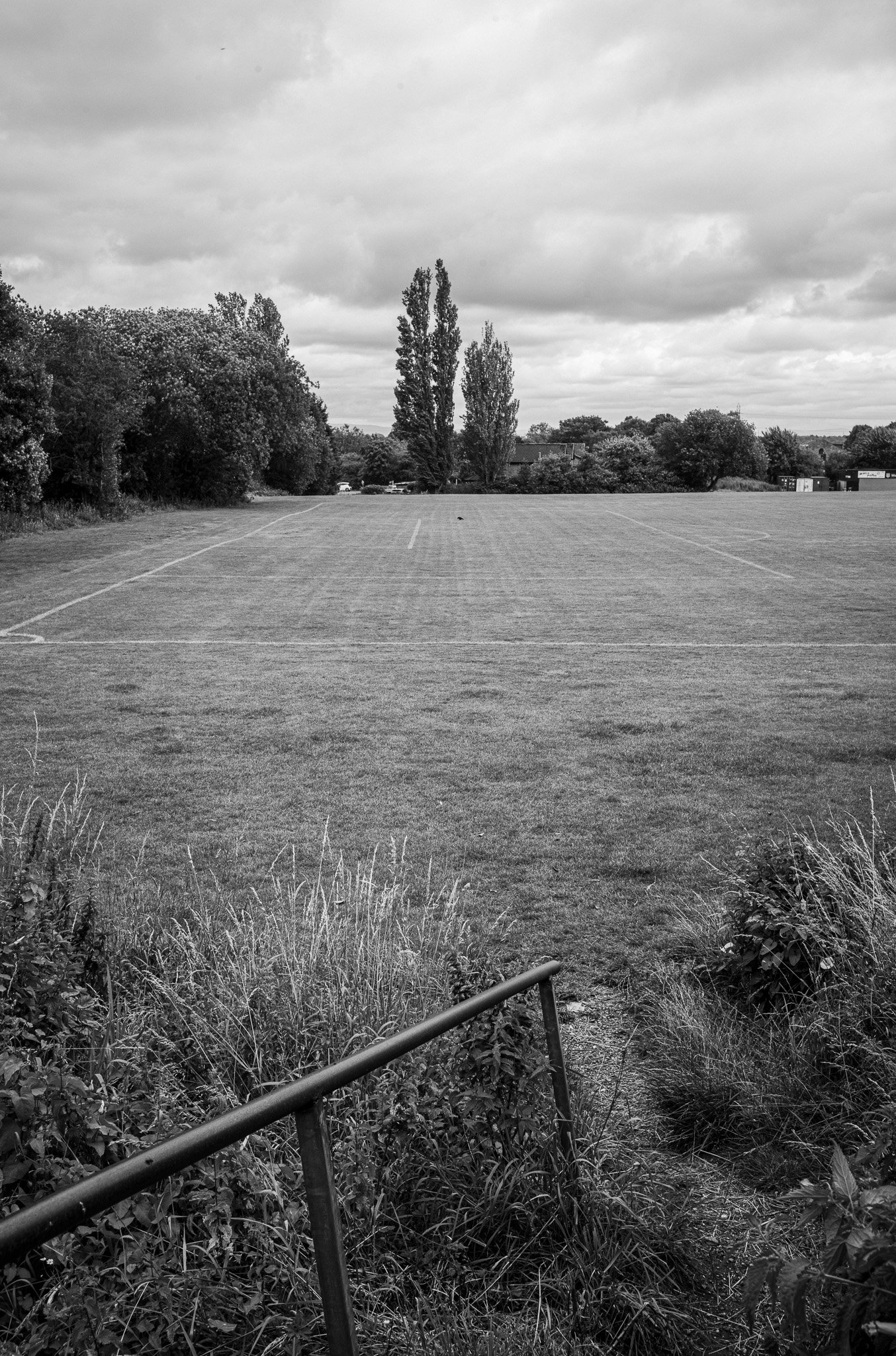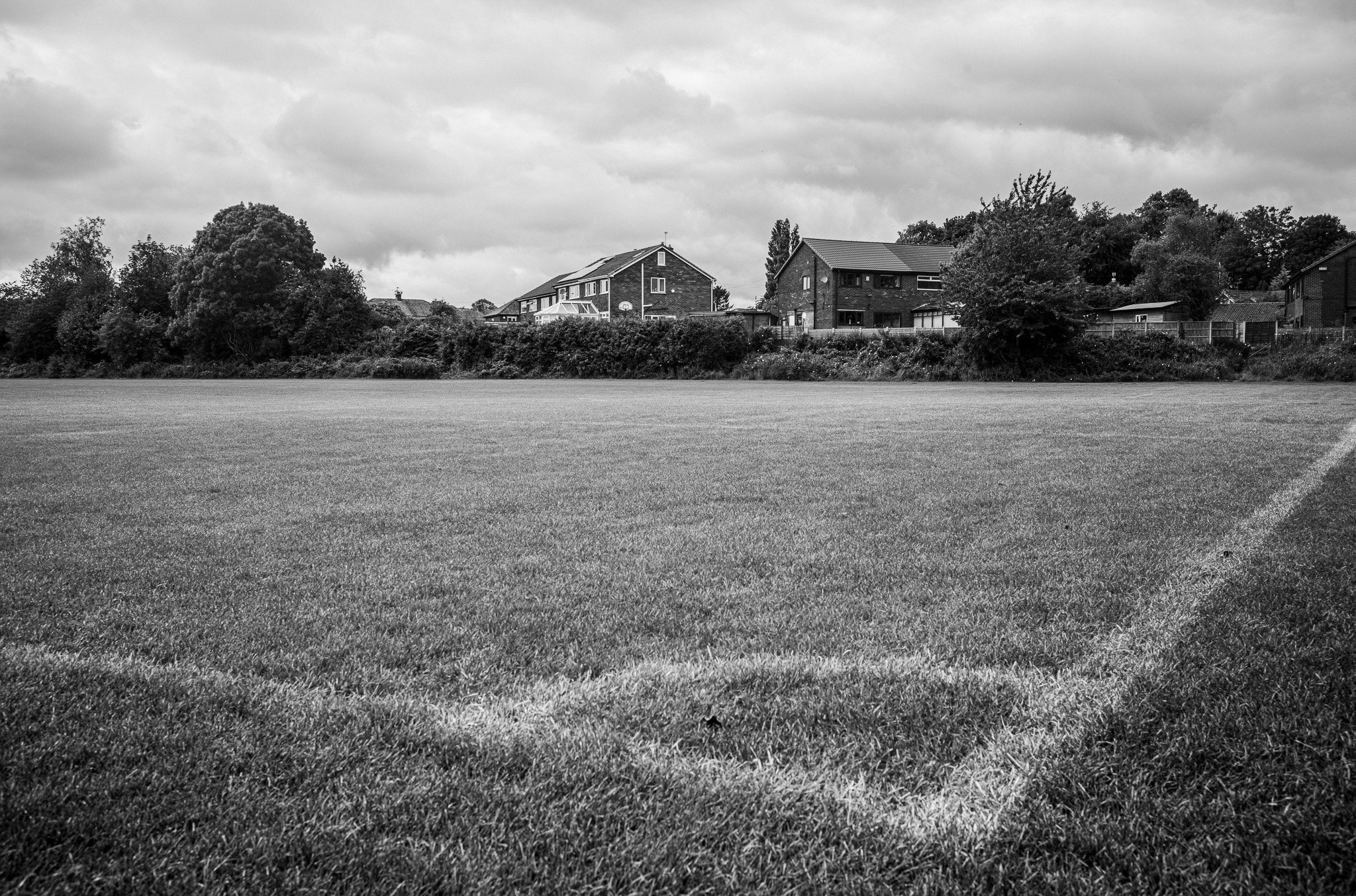
Wellington Barracks : Endless Summers and Wembley Doubles
This work returns me to Westbury Playing Fields - though everyone simply called it "the Barracks," a name that still carried the name of its previous life as a Lancashire Fusiliers training ground. These photographs attempt to find both personal and collective memory from a place that held my history within its boundaries, though like most of my endeavours, it uncovers as many questions as answers.
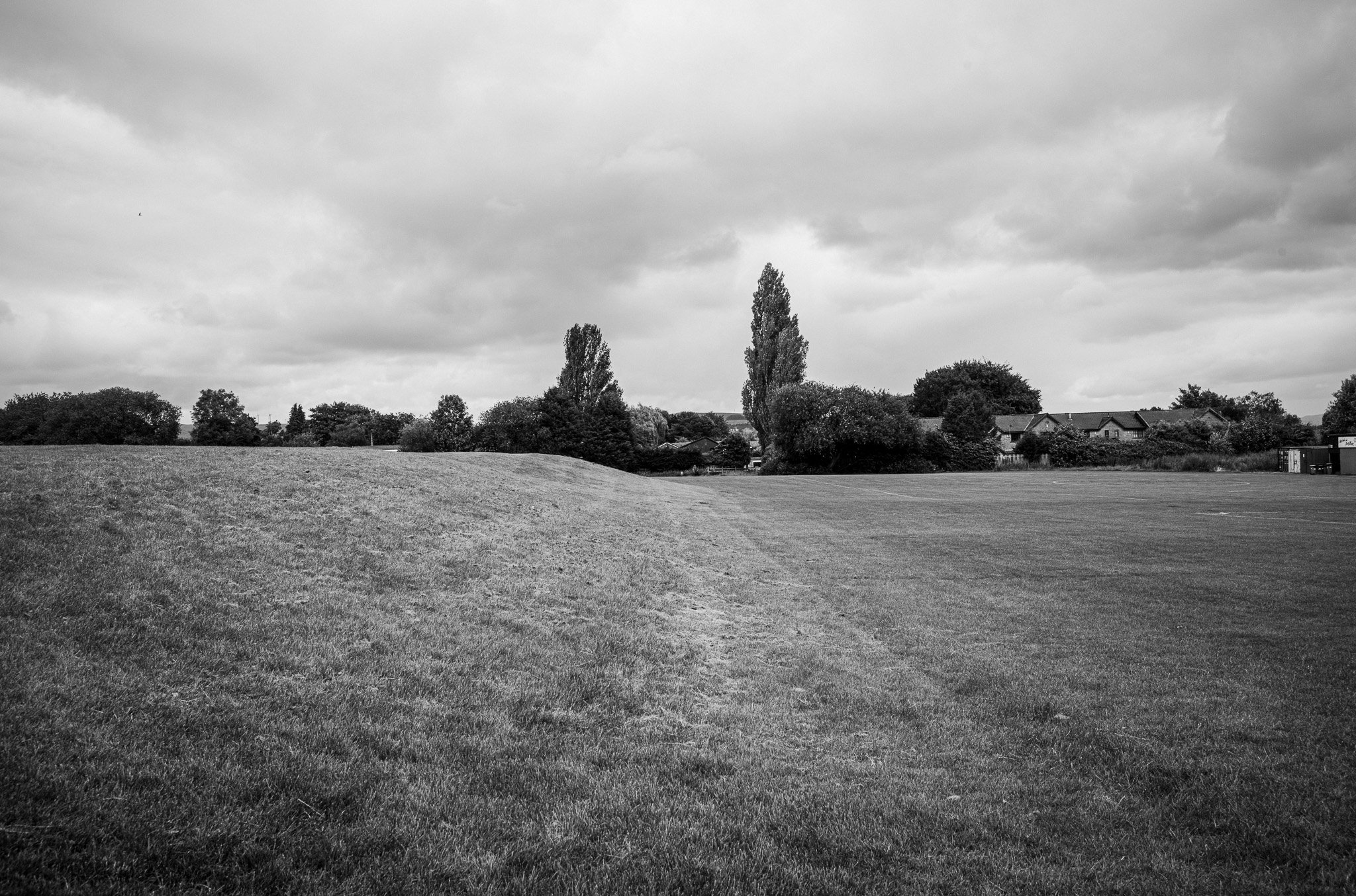
The past lingers in my childhood occupation of this space. Ian Gilmore and I would scour the old shooting ranges, digging through sand to unearth spent cartridges- small metallic treasures that connected us to a previous that we couldn't comprehend. “Did any anyone get shot here? Was this the bullet?” A derelict single-story adjacent building became an unofficial headquarters, its broken windows and concrete surfaces scarred by fires lit by older kids whose world we glimpsed but dare not enter. We'd climb onto the flat concrete roof using the metal window frames as makeshift ladders, transforming decay into adventure.
The fields remain, but they are simultaneously familiar and foreign. I find myself searching for traces of the endless summer afternoons when Ian and I would arrive with our ball, ready to transform the mundane landscape into world renowned sporting stadia. We played our "Wembley singles" - elaborate tournaments that existed only in our minds but felt monumentally important. The imaginary cup competitions stretched across hours and days, complete with commentary we provided ourselves and victories that mattered probably more than any real trophy ever could.
Through the lens, I attempt to locate the exact spots where we stood during those breathless conversations about girls we fancied but lacked the courage to approach. The camera seeking the spaces where we'd occasionally be joined by Crowy and Gaz for cricket, or where James Graves, Eddie Keaton and Andrew Walsh would materialise for larger games.
But it was mainly just Ian and me. Two lads creating meaning from empty space, building friendship through shared mythology and the simple act of showing up, day after day, to the same patch of public ground.
What strikes me most in revisiting these spaces is not what I remember, but what I can no longer access. The photographs capture the physical reality - the make-shift goalposts, the worn penalty areas, the boundary grass - yet they cannot resurrect the weight of those childhood summers or the particular quality of light that seemed to last forever. What happens to the elaborate inner worlds we construct as children?
These images pose questions I simply cannot answer: How do places accumulate significance across different generations of users? How do we measure the significance of seemingly ordinary places? What happens to the elaborate inner worlds we build that exist parallel to, rather than in service of, larger narratives - do we hand them down the generations? How do spaces hold memory and what do they release?
The photographs acknowledge the beautiful complexity of boyhood friendships and the specific geography where they unfold. They are my attempt to map the territory of a particular childhood while recognising that every viewer brings their own version of "the Barracks" - spaces where friendship was everything and the whole world could be contained within the boundaries of a playing field.
